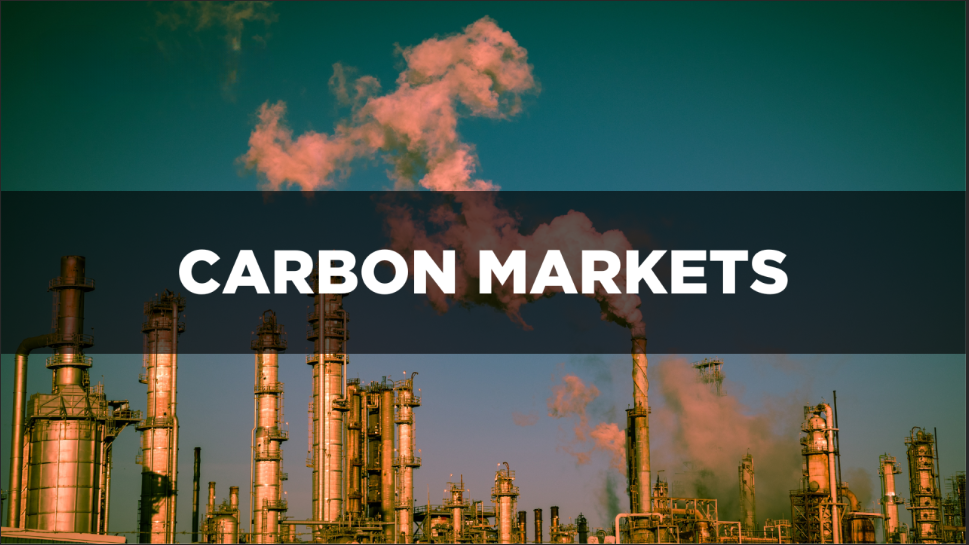
The Carbon Border Adjustment Mechanism (CBAM) is a transformative initiative introduced by the European Union (EU) as part of its broader climate strategy. This mechanism aims to address the challenges of climate change by imposing carbon costs on imported goods, thereby ensuring that imports meet the same environmental standards as products manufactured within the EU. CBAM is a critical component of the EU’s commitment to achieving carbon neutrality by 2050 and reducing greenhouse gas emissions by at least 55% by 2030 compared to 1990 levels.
Paris Agreement to CBAM
The Paris Agreement, adopted in December 2015 during the 21st Conference of the Parties (COP21), marked a significant milestone in global efforts to combat climate change. The agreement established a framework for countries to set their national determined contributions (NDCs) aimed at limiting global warming to well below 2 degrees Celsius, with an aspiration to limit it to 1.5 degrees Celsius
Key Elements of the Paris Agreement:
Financial Support: Developed countries are expected to provide financial resources to support developing nations in their climate efforts.
Global Temperature Goals: Aiming to keep global temperature rise below 2°C and pursuing efforts to limit it to 1.5°C.
Nationally Determined Contributions (NDCs): Countries are required to submit their climate action plans and update them every five years.
In this context, CBAM emerges as a vital tool for the EU to ensure that its ambitious climate goals are not undermined by imported goods produced under less stringent regulations. By imposing carbon costs on imports, the EU seeks to create a level playing field for its industries while encouraging other nations to adopt more robust climate policies.
What is CBAM? What It Includes
The European Union’s Carbon Border Adjustment Mechanism (CBAM) is being introduced in stages to help businesses adapt to new carbon reporting and pricing requirements while preventing “carbon leakage“—the shifting of production to countries with weaker environmental regulations. CBAM ensures that imported goods face the same carbon costs as EU-produced goods, thereby promoting fair competition and encouraging cleaner production globally
Key Features of CBAM:
1.Targeted Sectors:Initially, CBAM will focus on sectors that are most vulnerable to carbon leakage, including:
2.Carbon Pricing:Importers will be required to purchase CBAM certificates that correspond to the carbon emissions embedded in their products. The pricing of these certificates will be linked to the average auction prices of EU Emissions Trading System (ETS) allowances.
3.Phased Implementation:The mechanism will be implemented gradually, with a transition period allowing industries time to adapt. Full implementation is expected by 2026.
4.Verification Process:The mechanism will be implemented gradually, with a transition period allowing industries time to adapt. Full implementation is expected by 2026.
CBAM’s Two-Phase Implementation
The European Union’s Carbon Border Adjustment Mechanism (CBAM) is being introduced in stages to help businesses adapt to new carbon reporting and pricing requirements. Here’s a breakdown of the implementation timeline:
This phase is designed to prepare businesses for the upcoming carbon pricing system by focusing on data collection and reporting, with no financial burden.
- Quarterly Reporting:Importers must report the greenhouse gas emissions embedded in their imported goods every three months.
- No Financial Charges: There are no mandatory fees during this phase; the focus is on establishing effective monitoring and reporting practices.
Definitive Regime: Starting January 1, 2026
This phase marks the full implementation of CBAM, introducing financial obligations for importers.
- Purchase of CBAM Certificates: Importers will need to buy CBAM certificates that correspond to the amount of carbon emissions embedded in their goods.
- Pricing Alignment with EU ETS: The cost of these certificates will be linked to the EU Emissions Trading System (ETS), ensuring imported products face the same carbon costs as those produced within the EU. Prices will be determined based on the weekly average auction price of EU ETS allowances, measured in euros per ton of CO₂ emitted.
How CBAM Works
The operational framework of CBAM involves several key steps that importers must follow:
- Registration: Importers must register with national authorities in EU member states before importing covered goods.
- Annual Declarations: By May 31 each year,importers are required to submit an annual declaration detailing the total verified emissions embedded in their imports during the previous year.
- Certificate Purchase: Based on their declared emissions, importers must purchase an equivalent number of CBAM certificates from designated authorities within the EU.
- Compliance Monitoring: National authorities will monitor compliance and enforce penalties for non-compliance, ensuring that all importers adhere to the requirements set forth by CBAM.
Certificate Trading
The Carbon Border Adjustment Mechanism (CBAM) introduces a certificate trading system to equalize carbon costs between EU-produced and imported goods.
Steps Involved in Certificate Trading:
- Identification and Calculation: Importers must assess the direct and indirect CO₂ equivalent (CO₂e) emissions embedded in their imported goods. This can be done using actual emissions data or, for certain products like electricity, default values.
- Registration: Importers are required to register with the relevant national authorities to participate in the CBAM system. This account will facilitate the purchase and management of CBAM certificates.
- Annual Declaration Submission:Each year, importers must submit a declaration detailing the total quantity of imported goods and their corresponding embedded emissions. This ensures transparency and accurate accounting of the carbon footprint associated with imported products..
- Purchasing Certificates: Based on the declared emissions, importers need to purchase CBAM certificates from national authorities. The price of these certificates will be calculated based on the weekly average auction price of EU Emissions Trading System (ETS) allowances, expressed in euros per tonne of CO₂ emitted.
- Surrendering Certificates: At the end of each compliance period, importers must surrender a number of CBAM certificates equivalent to the total embedded emissions of their imported goods. This step finalizes the importer’s responsibility for the carbon emissions associated with their products.
- Market Dynamics: The cost of CBAM certificates is dynamic, reflecting the weekly average price of EU ETS allowances. This market-based approach allows importers to manage their carbon costs effectively, as prices may fluctuate based on supply and demand dynamics within the carbon market.
Relevance of Steel in the Context of CBAM
The European Union’s Carbon Border Adjustment Mechanism (CBAM) is poised to significantly impact India’s steel industry, given the sector’s substantial exports to the EU. Steel production is highly energy-intensive and contributes significantly to carbon emissions, accounting for approximately 12% of India’s total CO₂ emissions, with an emission intensity of 2.55 tonnes of CO₂ per tonne of crude steel. The EU’s CBAM specifically targets carbon-intensive industries, with steel being a primary focus. India, as one of the world’s leading steel producers, exports a considerable amount of steel to the EU. The imposition of carbon tariffs under CBAM could make Indian steel exports less competitive due to added costs associated with their carbon emissions.
Government Measures to Address CBAM Challenges
In response to the challenges posed by CBAM, the Indian government has initiated several measures to facilitate the steel industry’s transition to greener production methods
1.National Green Hydrogen Mission: This mission focuses on the production and utilization of green hydrogen in the steel sector, aiming to reduce reliance on fossil fuels and lower carbon emissions.
2.Steel Scrap Recycling Policy 2019: Implemented to increase the availability of domestically generated scrap, this policy promotes the use of recycled materials in steel production, thereby reducing the carbon footprint.
3.Motor Vehicles (Registration and Functions of Vehicles Scrapping Facility) Rules 2021: These rules aim to enhance the availability of scrap for steelmaking, contributing to more sustainable production practices
4.Perform, Achieve and Trade (PAT) Scheme: Part of the National Mission for Enhanced Energy Efficiency, this scheme incentivizes the steel industry to adopt energy-efficient practices, thereby reducing overall energy consumption and associated emissions.
Implementation and Reporting WRT Indian Businesses
Businesses exporting to the EU must adapt to CBAM requirements by improving emissions tracking, optimizing production processes, and exploring cleaner energy alternatives. Early preparation will be key to maintaining market competitiveness in the evolving global trade landscape.
Key Considerations for Indian Exporters:
- Increased Operational Costs: The requirement to purchase CBAM certificates will add financial burdens on exporters unless they can reduce their carbon footprints effectively.
- Robust Reporting Systems: Companies will need robust systems for accurate tracking and reporting of emissions data related to their products, necessitating investments in technology and training.
- Sustainability Initiatives: To mitigate costs associated with CBAM compliance, Indian businesses may need to invest in cleaner technologies and sustainable production practices that reduce overall carbon emissions.
- Strategic Planning: Businesses should develop strategic plans that align with both domestic regulations and international standards set by mechanisms like CBAM, ensuring long-term competitiveness in global markets.
- Collaboration with Stakeholders: Engaging with government bodies, industry associations, and environmental organizations can help businesses navigate compliance challenges while leveraging available resources for sustainability initiatives.
Conclusion
The Carbon Border Adjustment Mechanism represents a transformative shift in global trade, intertwining environmental responsibility with economic activity. While it presents challenges, especially for developing economies like India, it also offers an impetus to adopt sustainable practices. As CBAM moves into full implementation in 2026, businesses around the world will need to improve emissions tracking, optimize production processes, and explore cleaner energy alternatives to avoid extra carbon costs and stay competitive in the EU market.










